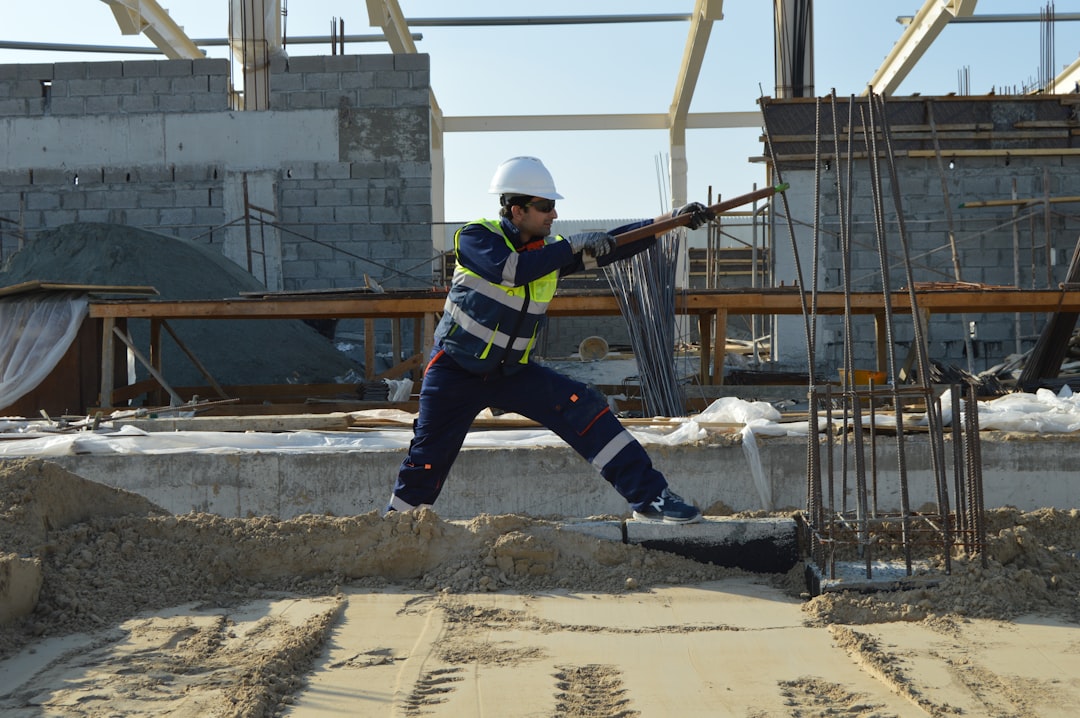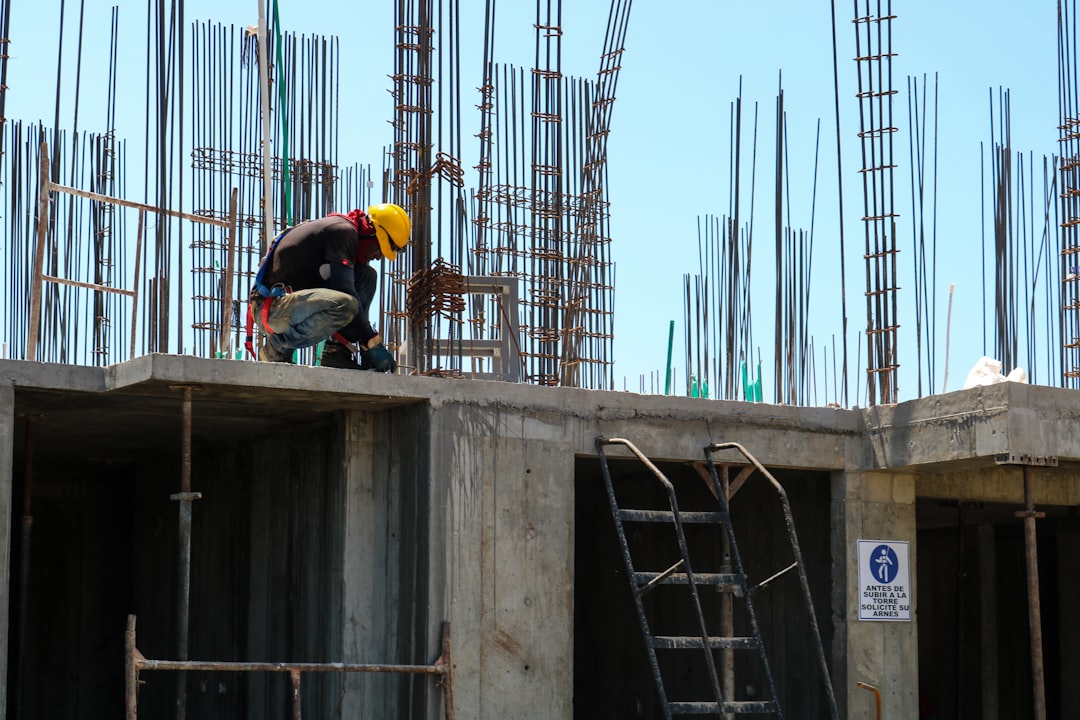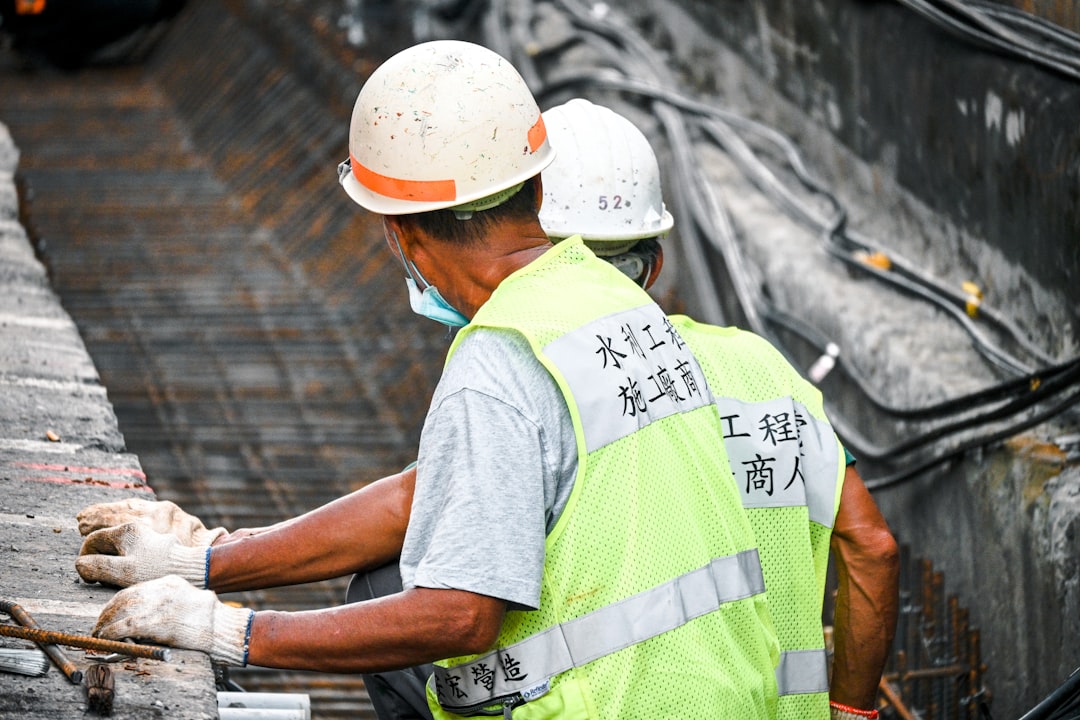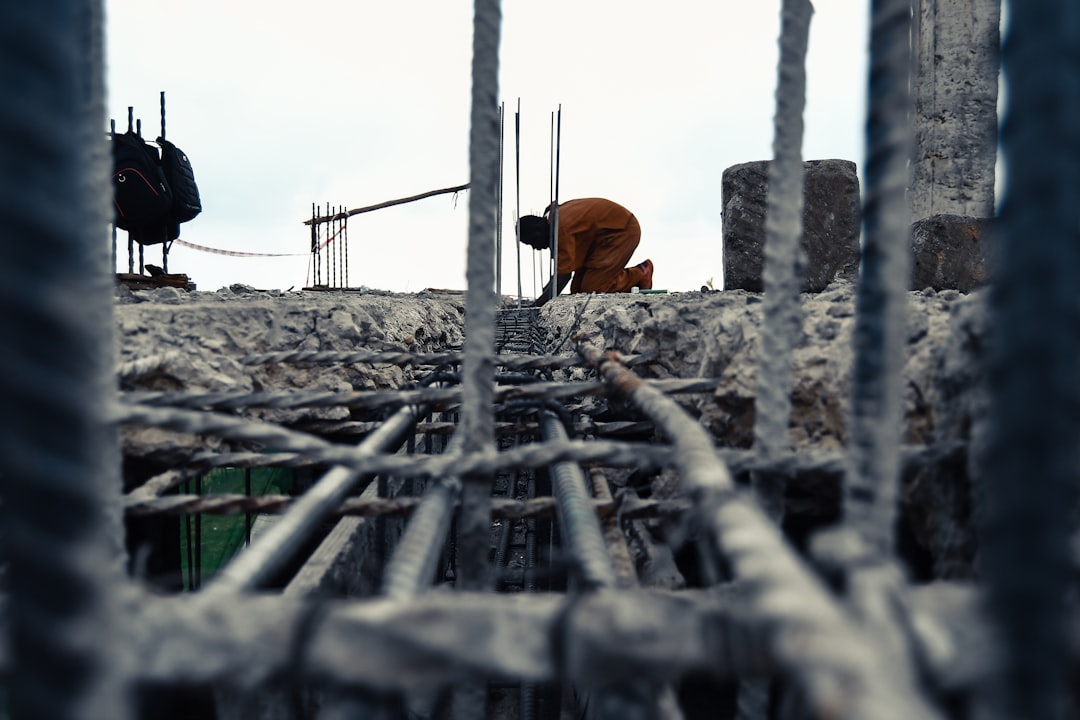

Engage prospects with a scan and streamline customer engagement with FREE QR code marketing tools by Sona – no strings attached!
Create a Free QR CodeFree consultation

No commitment

Engage prospects with a scan and streamline customer engagement with FREE QR code marketing tools by Sona – no strings attached!
Create a Free QR CodeFree consultation

No commitment
In today’s digitally driven world, QR codes have evolved from a novelty to a strategic powerhouse in bridging offline engagement with online action. For cement contracting companies, QR codes offer a low-friction way to address persistent operational pain points, streamlining workflows, accelerating project timelines, and safeguarding revenue opportunities without requiring an app download or complex setup.
Cement contractors and construction businesses routinely battle project delays and administrative bottlenecks, often caused by fragmented communication or missed handoffs between job sites and the back office. Missing opportunities to surface critical client data or capture early buyer interest can let valuable prospects slip through the cracks. QR codes can close these visibility gaps, eliminating manual paperwork, simplifying material tracking, and enabling real-time access to safety protocols or project specifications directly from the field.
By integrating QR codes into everyday processes, cement contracting companies gain the ability to convert physical touchpoints such as site signage and equipment tags into rich data streams. Link printed proposals to dynamic content that updates as projects evolve. This sharpens marketing outreach, provides granular insights for operational improvements, and helps teams stay ahead of missed opportunities and churn risk. This guide explores how concrete construction leaders leverage QR strategies to overcome industry challenges and unlock measurable business value at every stage.

QR codes bridge the gap between physical processes and digital outcomes, offering new avenues for cement contractors to recapture lost prospects and tighten operational controls. When thoughtfully deployed, they replace analog steps such as paper sign-in sheets, three-ring binders of safety documents, handwritten delivery tickets, and printed plan sets that quickly become outdated. The result is faster coordination between the field and the office, fewer errors, and a documented trail for compliance and client confidence.
A strategic approach addresses key obstacles cement contractors face. Start by mapping where information is currently lost or delayed: safety orientations, spec revisions, RFI responses, equipment maintenance, and inbound lead capture. Define how QR codes can reduce friction at those moments. For instance, instead of passing around paper forms for toolbox talks, place a QR code on the site board that links to the latest checklist and timestamps each completion. Instead of waiting for a superintendent to email photos of a pour, attach a QR to the pour location that triggers a quick progress form and uploads images straight to a shared project folder.
A strategic approach addresses key obstacles cement contractors face:
Here’s how progressive companies address these challenges with QR codes:
For example, converting paper-based specs to QR-linked digital documents can eliminate costly miscommunications, while QR-enabled forms logged into your CRM replace time-consuming, error-prone data entry. Modern tools such as Sona QR allow companies to seamlessly capture, track, and integrate scan data into their lead and operations pipelines, ensuring high-value engagement does not slip by unnoticed. Replace stacks of outdated brochures with a single QR that always points to the most recent project portfolio, or swap manual sign-offs for QR-assisted digital approvals that shorten cycle times and create auditable records.

Cement contractors operate under constant pressure to deliver projects accurately and on time, yet they often lack the tools needed to track and convert high-value opportunities before competitors engage. QR codes address these pain points by connecting physical activity to digital workflows and by revealing engagement signals that used to be invisible.
Contractors embedding QR codes in safety signage or bid proposals are surfacing new business development opportunities and focusing on their highest-value prospects. Many of these prospects previously remained invisible because there was no simple way to act in the moment. With QR-driven engagement, every flyer, yard sign, and delivery note can lead to a trackable interaction that informs sales prioritization and resource planning.

For cement contractors, standard tools like spreadsheets or generic form links often fall short, especially when it comes to surfacing real buyer intent or accurately segmenting leads. QR codes can be generated in multiple formats so that each scan points to the right action and captures the right data without friction.
Solutions with robust QR management, both static and dynamic, enable companies to keep content updated, audiences accurately segmented, and critical site data in sync. Dynamic codes from platforms like Sona QR allow you to change destinations post-print, add UTM parameters, and view engagement metrics by code, campaign, or job, which is ideal for fast-moving projects and evolving documentation.

Missed growth in cement contracting often stems from unseen or untracked engagement. Prospects explore project portfolios online, crew members access training, and new suppliers show interest but never raise a hand. QR codes convert these passive moments into measurable intent and faster follow-up.
QR codes can bridge these insight gaps across the following key touchpoints:
By embedding QR codes in these areas, contractors diversify their acquisition channels and solve the common challenge of failing to identify and engage prospects demonstrating meaningful intent. You transform every surface around your operation into a conversion opportunity and a data source, both critical for navigating seasonality and competitive bidding environments.

Industry studies show that missed, delayed, or incomplete lead capture sharply reduces win rates and increases the risk of churn. QR codes create proactive solutions for these core needs and embed accountability into field operations.
By connecting each scan to a specific process or persona such as crew, client, or prospect, companies can tailor their outreach and operational responses. Safety scans can trigger refresher training reminders, progress scans can ping project managers for approvals, and marketing scans can open targeted nurture journeys. The result is a more resilient pipeline and smoother execution across the project lifecycle.
Traditional marketing often casts too wide a net, wasting budget on uninterested parties. Smart cement contractors now look to QR code scans as sources of intent-rich audience data. Every scan carries context such as location, time, and creative that was scanned, which is powerful for segmentation.
For cement contracting, a useful segmentation example distinguishes municipal buyers, commercial property managers, developers, and homeowners. Each persona responds to different proof points such as compliance history, large-scale pour capacity, schedule reliability, or aesthetic finishes. QR scans help you infer persona and interest so your follow-up hits the mark.
Cement contractors risk missing high-intent prospects when offline campaigns are not connected to digital follow-up. QR codes serve as a bridge, closing this loop and surfacing engagement that would otherwise go untracked. They also reduce friction for busy decision-makers who prefer to scan rather than type long URLs. For practical ideas, explore contractor marketing tips.
Centralized dashboards for engagement data further enable contractors to see the true impact of their offline campaigns and optimize for ROI. With Sona QR, you can manage all codes, monitor performance, and sync scan data with your CRM, giving you a complete picture from first scan to signed contract.
Launching an effective QR program involves clear goals, smart design, thoughtful deployment, and disciplined optimization. Below is a practical checklist tailored to cement contracting environments where dust, distance, and deadlines are part of the daily reality.
Identify the single business outcome that matters most right now. Examples include reducing lost leads from direct mail, automating compliance acknowledgments at site entrances, or streamlining change order approvals. Clarity at this stage helps you select the right destination and data to capture at the moment of scan.
Align the QR deployment with real-world processes your team already follows. For example, place a QR at the jobsite gate for daily safety check-ins, add a QR to municipal bid packets for immediate RFI submissions, or print a QR on delivery tickets for instant proof-of-delivery uploads. The strongest programs meet people where they already are instead of inventing new steps.
Choose between static and dynamic codes. Static codes are suitable for destinations that rarely change such as evergreen company brochures. Dynamic codes are best for evolving documents, campaigns, and anything you want to measure or update without reprinting.
In construction, conditions change fast. Dynamic codes give you flexibility to update links when a spec revision is released, when a project gallery is refreshed, or when you discover a landing page is not converting well. Platforms like Sona QR support both types with tracking, retargeting, and content management in one place.
Strong design improves scan rates. Apply your brand colors, frame the code with a clear call to action, and ensure contrast against the background. Add a short benefit statement specific to the context such as “Scan for today’s safety checklist,” “Scan to request a quote,” or “Scan for mix design submittals.”
Test thoroughly in the environments where codes will live. Sun glare, dust, humidity, and distance can impact performance. Print at appropriate sizes for the viewing distance, laminate where necessary, and conduct field scans on multiple devices to validate reliability.
Start where QR codes remove the most friction. Entrances, equipment check-in points, fleet vehicles, yard signs, and proposal packets are common high-impact placements. Prioritize channels that touch your target audience when they are most ready to act.
Think about the scanning context. A superintendent may scan a code at the gate every morning, while a city procurement officer may scan a brochure in an office. Place codes at natural eye levels, ensure they are not obstructed by mud or debris, and use durable materials suited to outdoor exposure.
Measurement closes the loop. Use a platform that records scan time, location approximations, device type, and campaign source parameters. Review data weekly to identify which codes and placements drive the most engagement and which drop-off points need attention.
Iterate continuously. Test different CTAs, landing page layouts, and image assets. Maintain a hygiene routine: replace damaged codes, refresh creative, and update destinations as projects move from bid to contract to closeout.
Without clear data, cement contractors risk incomplete customer profiles, missed handoffs, and ambiguous ROI on outreach initiatives. QR code analytics fill this gap by connecting physical engagement to downstream business outcomes such as meetings booked, change orders approved, or projects awarded.
Modern solutions for scan attribution and account-level tracking turn formerly anonymous engagement into measurable, targeted business growth. With Sona QR and Sona, an AI-powered marketing platform for identity resolution and activation, you can unify scan data with website visits, ad clicks, email engagement, and CRM activity. Identity resolution connects scans from the same buyer across channels so you can prioritize outreach, forecast more accurately, and allocate budget based on proven impact.
Sustaining QR-driven gains requires both tactical and strategic follow-through. Focus on practices that make data actionable, keep the field engaged, and align scans with clear next steps.
Some firms place QR codes on mixers and batching equipment, giving crews instant access to maintenance guides while capturing usage data to identify training opportunities and prevent downtime. Others print QR codes on invoices so customers can approve change orders or pay balances securely, accelerating cash flow and reducing back-and-forth.
A mid-size cement contractor targeting lost worker participation now tracks safety checklist completion via QR codes on site boards. Completion rates increased by 32 percent after replacing paper sheets with a QR-linked form that timestamps submissions and feeds a compliance dashboard. Supervisors receive alerts for missed shifts, allowing quick intervention and reinforcing a strong safety culture.
Another firm that struggled with missed inbound leads added QR codes to direct mailers and fenced perimeter banners linked to personalized bid pages. The campaign drove a 17 percent lift in qualified quote requests over traditional methods where anonymous traffic was never captured. Because each code was unique to a neighborhood and banner, the team could double down where demand was strongest.
For workforce training, QR codes on machinery labels allowed new hires to instantly access video instructions and short quizzes. Onboarding time shortened by 20 percent while surfacing knowledge gaps that guided targeted follow-up. The company tied course completion to access badges for specific equipment, improving both safety and productivity.
Creative placements are expanding as well. One contractor added QR codes to concrete cylinder break reports so inspectors can scan and confirm results on-site, eliminating delays. Another uses QR tags on project mockups in the office lobby, letting visitors explore detailed case studies and request a call from a project manager with one scan. Try connecting forms with Google Forms to speed up data capture and routing.
Success with QR codes hinges on deliberate design, consistent process integration, and trust. Avoid the trap of scattering codes without a plan or failing to connect scans to clear outcomes.
Industry leaders broaden success by turning ordinary touchpoints such as gear, signage, and handouts into actionable digital assets. The most effective teams treat QR programs as living systems with owners, KPIs, and continuous improvement, rather than one-off experiments. For broader context on adoption barriers in construction, see these adoption challenges.
In cement contracting, QR codes serve as more than just shortcuts. They are essential tools for converting everyday physical interactions into meaningful digital touchpoints. By addressing challenges like missed leads, invisible account engagement, and incomplete compliance tracking, these codes provide a practical path to operational excellence and higher revenue yield.
Forward-thinking contractors leveraging QR codes are not only generating faster lead capture and more precise marketing campaigns, but also closing critical gaps that could otherwise delay projects or erode client trust. The result is a seamless interplay between offline activity and actionable data, enabling companies to personalize outreach, measure impact, and react in real time to both crew and customer needs.
For cement contractors intent on building a more responsive, data-driven business, embedding QR codes into daily routines can be the catalyst for transformation. Evaluate your current processes, consider where high-value opportunities may be slipping through unseen, and experiment with targeted QR strategies to turn hidden challenges into opportunities for measurable growth. If you want a fast way to pilot and scale, platforms like Sona QR can help you generate trackable codes, manage destinations, and connect scan activity to your CRM so you can prove results from day one. Start creating QR codes for free.
QR codes have revolutionized cement contracting companies by transforming traditional project management and client interactions into seamless, data-driven engagements. Whether it’s streamlining access to project details, enhancing communication with subcontractors, or providing clients instant updates, QR codes replace cumbersome paperwork with instant, mobile-friendly solutions that boost efficiency and transparency. Imagine having real-time insights into site activities and client interactions, all accessible through a simple scan.
With Sona QR, cement contractors can create dynamic, trackable QR codes in seconds—update project information instantly without reprinting, monitor scans to optimize workflows, and connect every interaction directly to project outcomes. No more delays or miscommunications—just smarter, more productive job sites and satisfied clients.
Start for free with Sona QR today and turn every scan into a gateway for better project control, stronger client relationships, and measurable business growth.
Professional cement contracting companies ensure projects are delivered accurately and on time, reduce manual errors, improve communication between job sites and offices, and provide expertise in handling various construction needs such as safety compliance and project documentation.
Cement contracting companies use QR codes to streamline workflows, eliminate manual paperwork, enable real-time access to safety protocols and project specifications, capture lead and client data, track material deliveries, and improve communication between field crews and back office teams.
Cement contracting companies typically handle projects involving concrete construction such as structural reinforcement, pavement rehabilitation, mass concrete placements, municipal bids, and large-scale pours for commercial and residential developments.
You can find reliable cement contracting services by researching local companies with proven track records, checking their project portfolios, looking for firms that use modern tools like QR codes for operational efficiency, and verifying their compliance with safety and quality standards.
The article does not provide specific names of top cement contracting companies in your area, but it suggests looking for firms that leverage digital tools such as QR codes for improved project management and client engagement.
Use Sona QR's trackable codes to improve customer acquisition and engagement today.
Create Your FREE Trackable QR Code in SecondsJoin results-focused teams combining Sona Platform automation with advanced Google Ads strategies to scale lead generation

Connect your existing CRM

Free Account Enrichment

No setup fees
No commitment required

Free consultation

Get a custom Google Ads roadmap for your business






Launch campaigns that generate qualified leads in 30 days or less.
